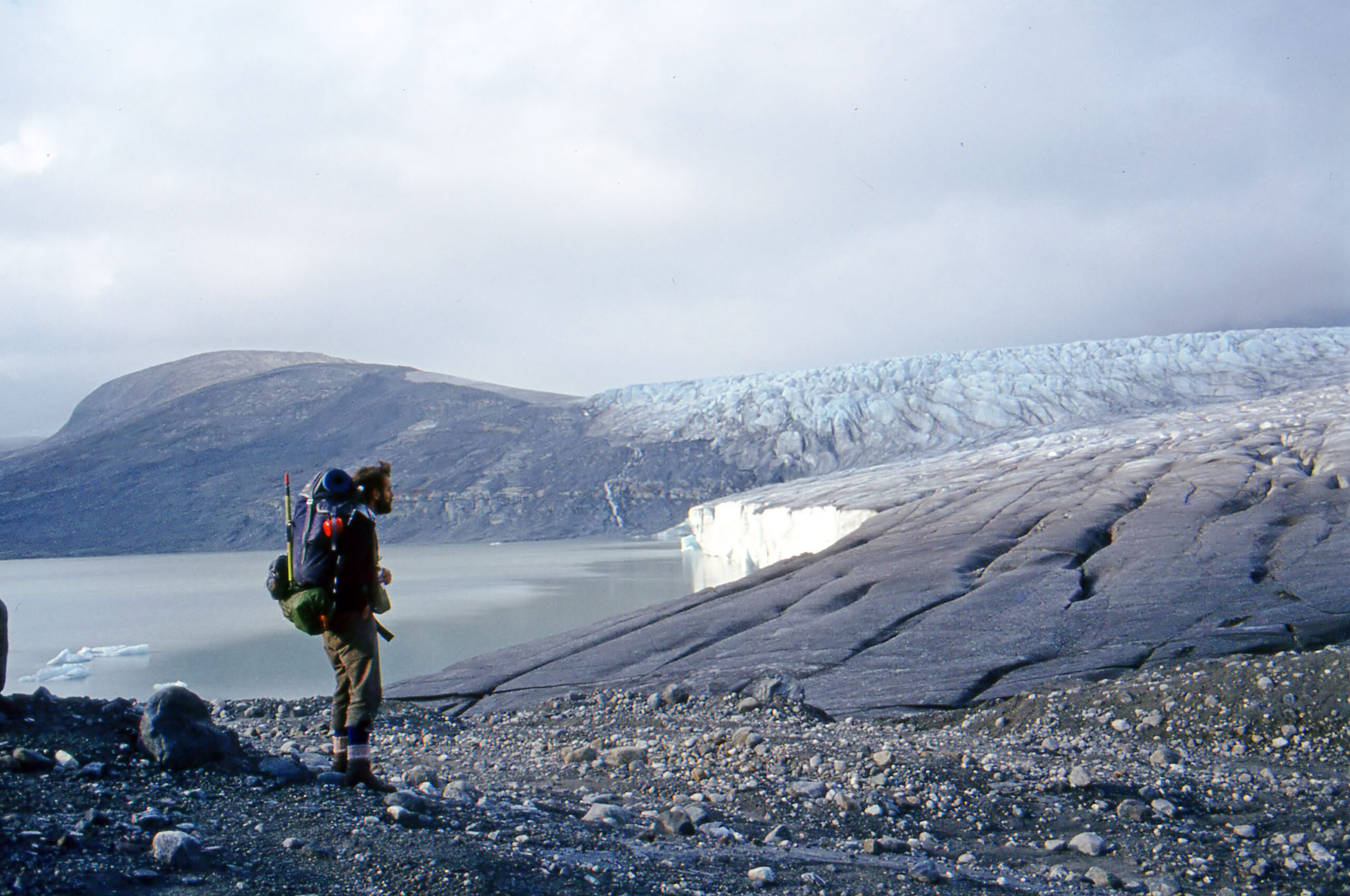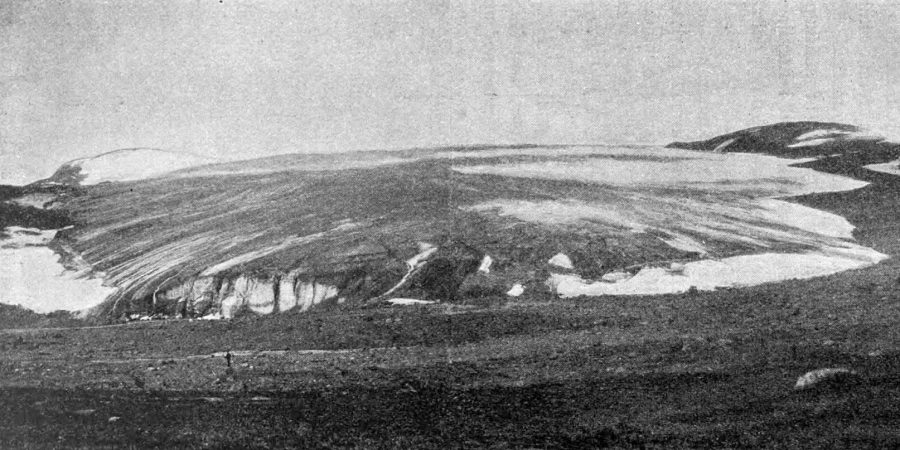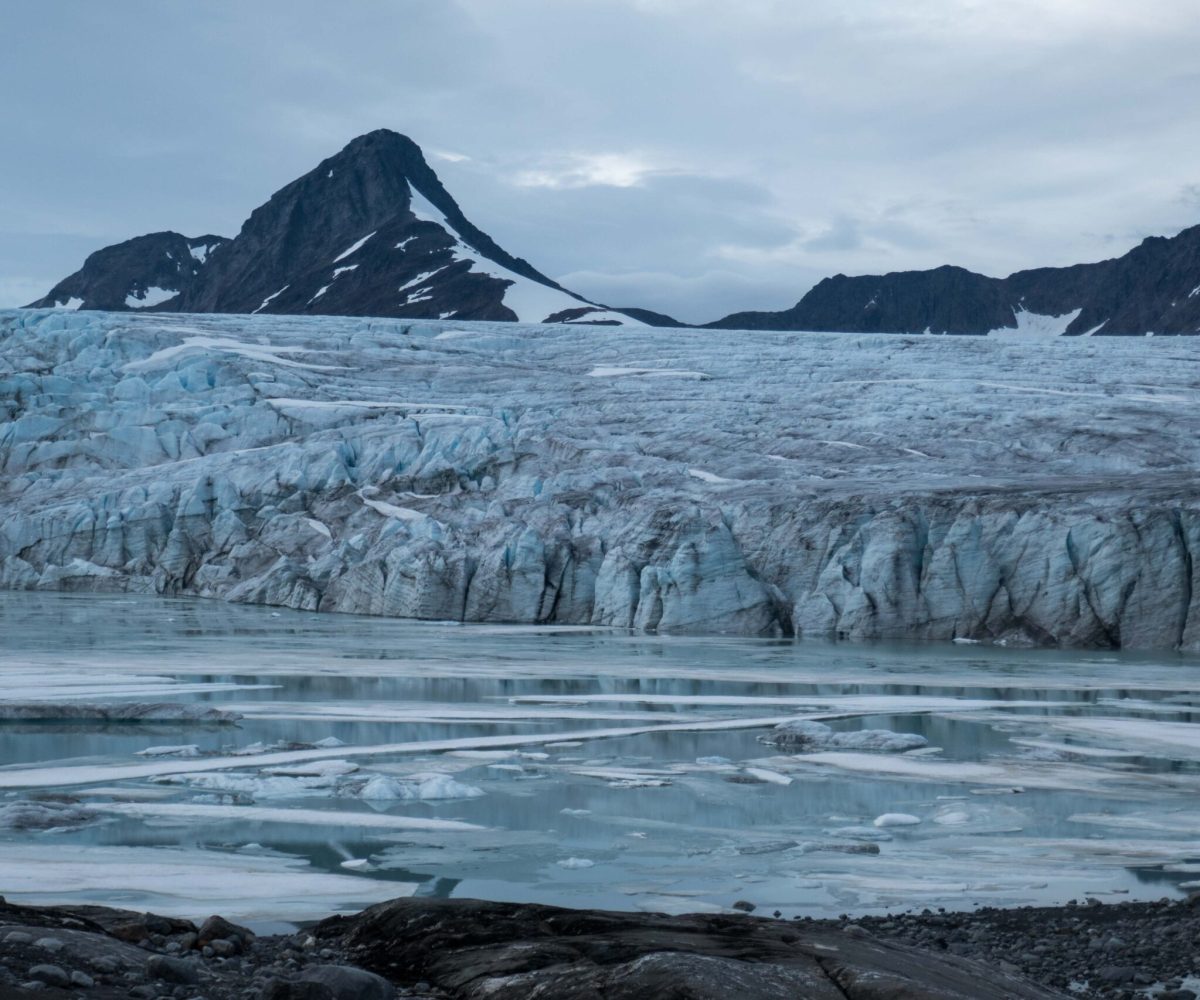Sálajiegna is a large glacier in the Sulitelma massif on the Norwegian-Swedish border. The glacier spans 20 km2 and has two tongues, one in each of the two countries. The Swedish snout is by far the most spectacular, as it terminates with a calving front into a lake.


Sálajiegna in 1960 (left) and 2020. Source: lantmateriet.se.
The calving front of Sálajiegna is over a kilometer wide and up to twenty meters high. The color of the ice varies from clear blue (and crevassed) in the west to darker, debris-covered in the east. Icebergs breaking off the glacier plunge into an unnamed lake, as it didn’t exist until the 1950’s.
As mentioned, Sálajiegna has two snouts. Nowadays, the Norwegian one ends half a mile from the lake. But when the glacier was first described in the 1800’s, Sálajiegna was one continuous glacier covering the entire lake. It wasn’t until 1950 that a first glimpse of the later lake became visible in between the slowly retreating glacier fronts. The Norwegian snout retreated westwards, the Swedish one eastwards. By 1983 the western outlet had left the lake, while the Swedish snout still occupied about half the lake (Schulthess, 2021).
Over the past decades the glacier kept receding by some 20 m per year. Where the calving front used to be orientated north-south across the lake, it now lies west-east at the northeastern shore of the lake. This change in orientation was accelerated in 2013, when parts of the margin of the eastern outlet of Sálajiegna Glacier collapsed. In this event a new pathway for water discharge was created and the water level of the lake subsequently dropped by about ten meters. A river that drained from the lake in the west dried up, thereby cutting Norway off from all meltwater.



Sálajiegna is still calving into the lake, although glacier thinning and retreat makes it likely that the frequency of calving events has decreased. Martin Schulthess, a student at Stockholm University, wrote his thesis on the calving at Sálajiegna. On the basis of acoustic signals recorded with hydrophones, time-lapse photography and photogrammetry he has characterized and quantified the glacier’s calving events.
Martin had a rough start. When he arrived at the glacier in mid-August, the glacial lake was still partly covered by ice. For the first four days of his eight-day field trip, he therefore couldn’t go out in his kayak to deploy the hydrophones. A few days later heavy winds helped to clear the ice, but prevented him to fly his drone to obtain aerial imagery. And when every was finally in place, the glacier probably calved less than it normally does in August. This has everything to do with the lake ice, that limits the ice flow velocity by holding it back and keeps water temperature low. After the lake ice disappears, it can take multiple weeks or even moths for the glacier to attain maximum flow velocity and therefore calving rates (Schulthess, 2021:46).


In the end Martin succeeded in recording fourteen calving events, the biggest event having a volume of 640 m3, the equivalent of five full-size school busses. It must have been quite the splash! After validating acoustic signals with photos, Martin developed an algorithm to automatically recognize large calving events based on their acoustic signal. By using sound recordings to register calving events rather than camera’s, it could become more easy to monitor glacier behavior in remote places or in bad weather.
When Martin carried out his research in the summer of 2020 (I happened to be there in the same period), ice covered the lake in front of Sálajiegna much longer than in most other years, thanks to abundant snow fall and low temperatures in May and July. Although this impeded Martin, it helped the glacier. Most other years the glacier has a lack of snow cover and the warmer lake water accelerates ice loss at the calving front. If ice loss continues at present rates, Sálajiegna retreats from the lake in the coming decades.
Search within glacierchange: